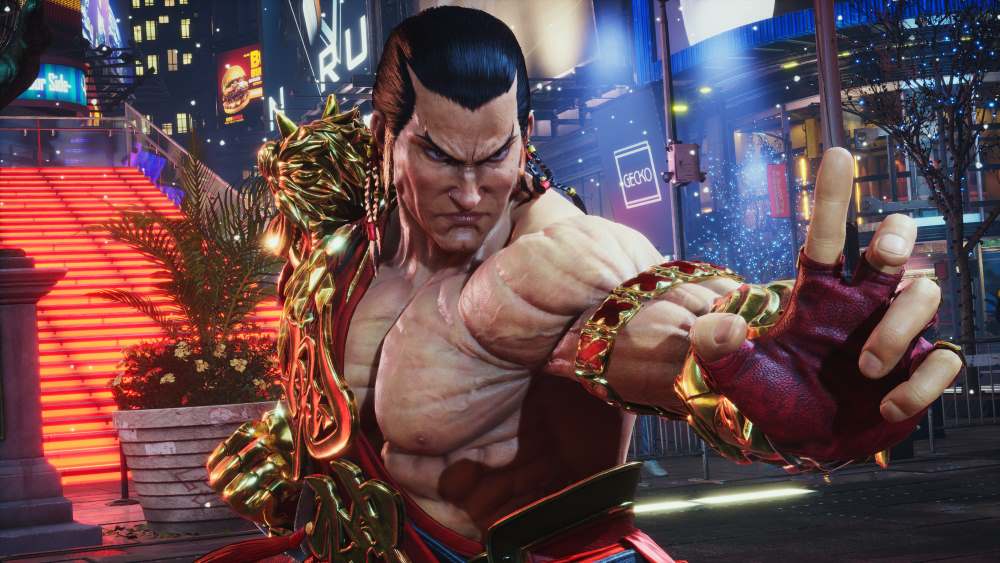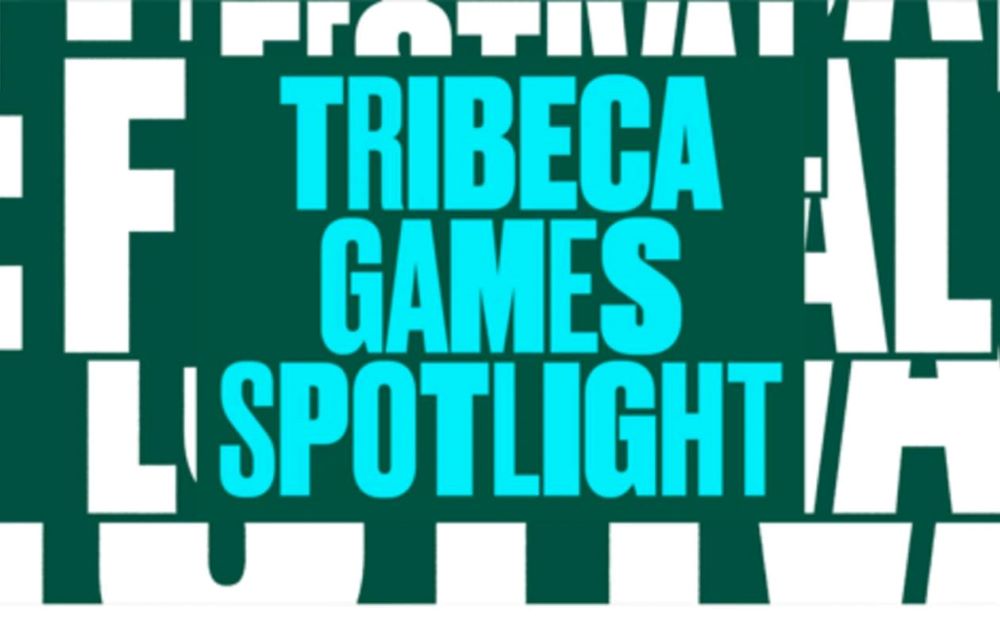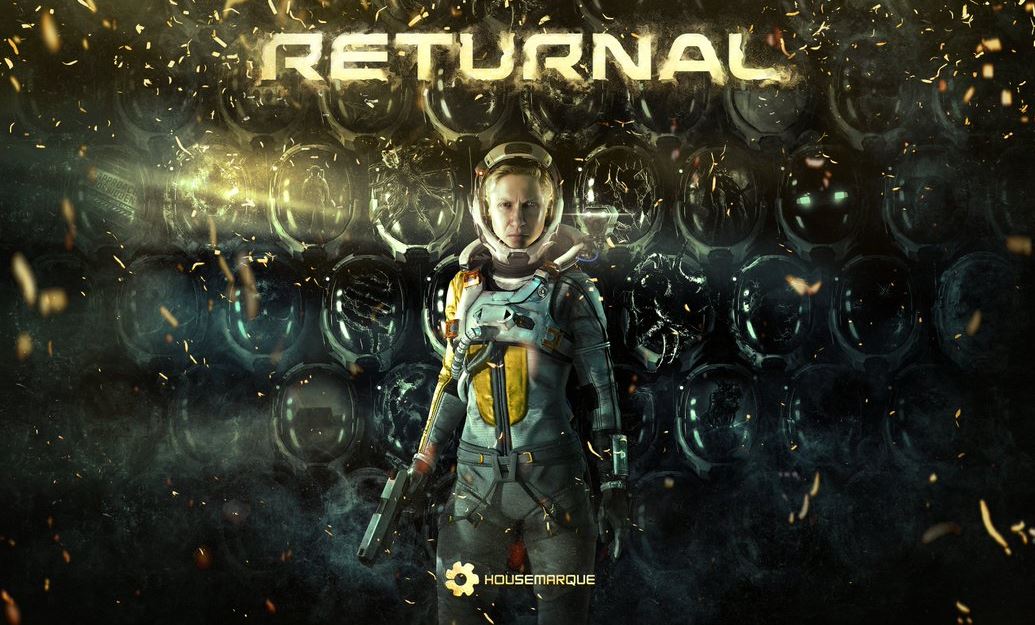Fantasian: Neo Dimension is like a “Huge High School Reunion” With Nintendo and Sony, Says Sakaguchi
Fantasian garnered significant attention upon its 2021 launch on Apple Arcade, thanks to the involvement of Hironobu Sakaguchi, the founding father of Final Fantasy, and renowned composer Nobuo Uematsu. Despite the initial excitement, the game’s second half went largely unnoticed.
Fast forward to 2024, Mistwalker has collaborated with Square Enix to bring the title to more platforms, rebranded as Fantasian: Neo Dimension. Set to release on December 5, 2024, the game will now offer the broader audience the opportunity to experience it beyond the walls of Apple Arcade.
We’ve had the rare privilege of being part of a Pre-Tokyo Game Show Press Interview with none other than Hironobu Sakaguchi himself and co-producer Naoki Yoshida (Final Fantasy XIV, Final Fantasy XVI) as they candidly chat about Fantasian: Neo Dimension; its inspirations, challenges, and joys in his homecoming with Square Enix.
Parts of this Fantasian interview have been edited for clarity.
Fantasian: Neo Dimension is A Second Chance to Make A First Impression
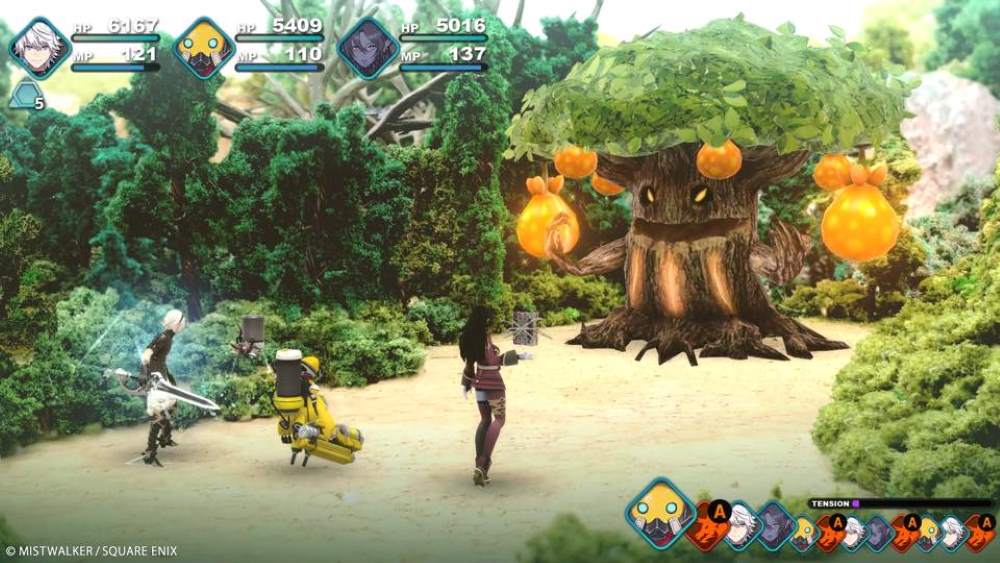
Media: You described Fantasian as a return to JRPGs of the past. Now, as a “consumer” more than a creator, how has your experience with the Final Fantasy franchise play into the development of Fantasian: Neo Dimension?
Sakaguchi: Right now, I’m now a big consumer of RPGs and I’ve been playing Final Fantasy XIV everyday. I just arrived in Japan yesterday and I was already spending a few hours in Final Fantasy XIV raids. In Savage 1, 2, 3, 4… (laughs).
In terms of Fantasian, I can attribute a lot of it to my experience to playing Final Fantasy VI over again. A few years ago, the platform makers were making miniature versions of their consoles, and it was the SNES that it was included in, and it was one of the first ROMs that was on that that particular platform.
And playing FFVI for a Famitsu live stream, it made me realize how this is really kind of the origin or kind of epitome of what I felt was my creative JRPG. So after playing that, having spent, you know, 20 plus years away from it, made me realize that this is the type of feeling that I really want to invoke in my game, and I think that informed a lot of how Fantasian turned out to be.
Media: Sakaguchi-san is known as the father of Final Fantasy games and Yoshida-san is like the next generation of Final Fantasy creators, we would like to know any fun stories during development, or if there any differing opinions about the direction of Fantasian in its development and how you’ve overcome those challenges.
Sakaguchi: So I never really put too much emphasis or weight on games having voiceover or voice acting in the games, but I recall Yoshida-san when we had a meeting at Square Enix one time and said, “I think it’s really important that Fantasian has voices.”
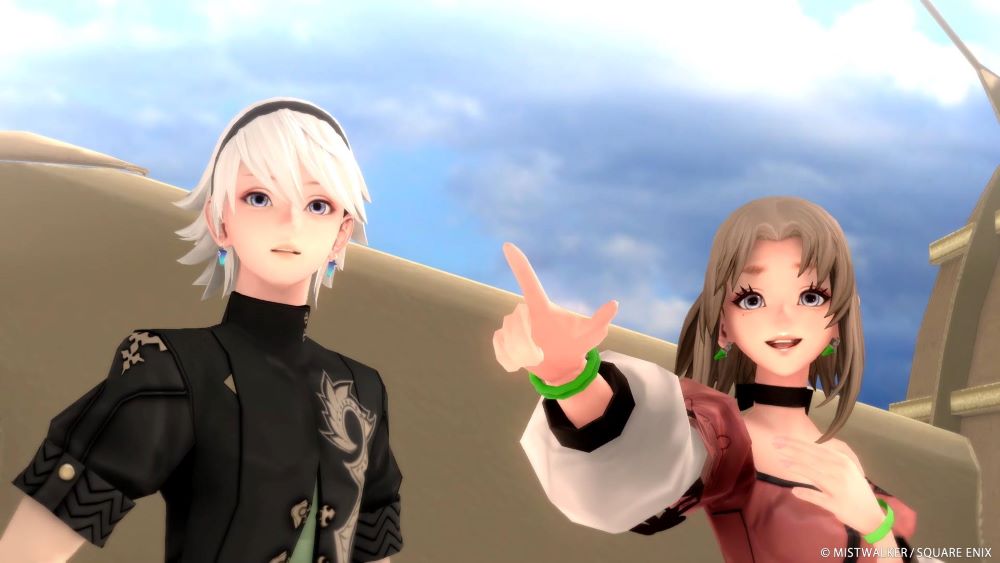
Yoshida: Sakaguchi-san has developed games in an era where text is the primary medium through which ideas are conveyed. And I think each individual can read, consume, or digest text that their own speed in kind of expands their imagination in some way. So you could argue that voice over actually kind of narrows the vision or the experience in a way.
I knew this about Sakaguchi-san, but even knowing that, Fantasian has a lot of involved character designs with Sakaguchi-san himself overseeing that process and I wanted as many people as possible to experience this around the world. I know that although it might narrow the user experience in some ways, it does enhance it because the acting and the performance can add layers that you wouldn’t experience from consuming the text alone.
So I was very adamant that we included voiceover in this version to make it a more attractive proposition for gamers and I think I didn’t really hold back any punches during that discussion. Sakaguchi-san told me himself that, “I don’t know if we really need voices in Fantasian,” It’s a pretty scary image when you come face to face.”
I confess it took a lot of courage on my part to be able to to say that, but I think that that was fairly early on in the co-production of Fantasian, and I think it really established that level of trust among us as partners in this project.
Sakaguchi: And of course, I was the one who said, I don’t think Fantasian needs voiceover, but having played the game with voice acting on it now, I think there’s a different type of emotional experience that you get. There’s a lot more nuance that you can feel from the characters, so thank you, Yoshida-san sign for that, and I know from the casting to the recording, all the know-how, Square Enix brought a lot of value to the project in that perspective.
Media: How do the creators feel working with each other in Fantasian: Neo Dimension? And how does Sakaguchi-san feel about working with Square Enix again?
Sakaguchi: This might be a rather odd commentary from my perspective, but I think working with Square Enix really showed the power of Square Enix’s ability to both develop and distribute games on such a massive scale. I have since founded Mistwalker, which is a rather small independent game development studio, and to see the sheer amount of scale that Square Enix has in terms of the just that momentum, it’s quite comforting to know that you have such a huge ally.
To make an analogy off of that I live in Hawaii right now, and in North Shore, you have these massive, massive waves, the kind of waves that if I try to surf on, I’d probably die. But it feels you could take on that type of wave with the help of Square Enix, so that’s kind of what that partnership felt like.
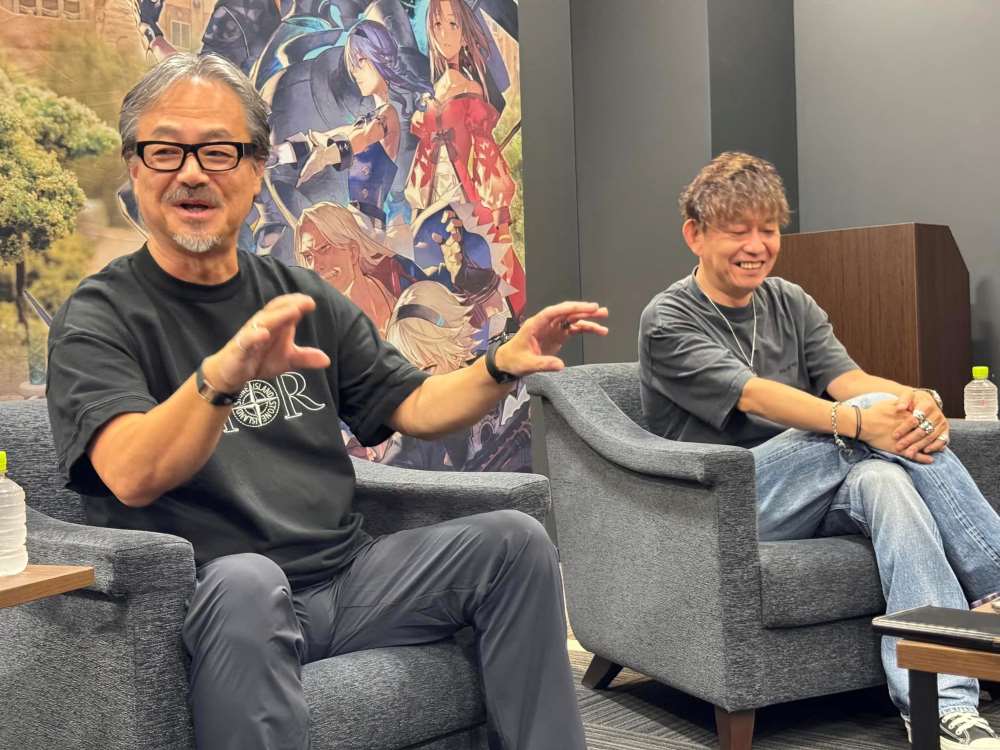
Yoshida: Well, from my perspective, of course, Sakuguchi-san sound is very generous in his social media presence, so I see every day he’s playing Final Fantasy XIV and every time there’s a little episode or some kind of anecdote and it really shows how invested and how much he understands the world of Final Fantasy XIV. So myself included, I think, the entire development team feels really, really happy and honored to be able to communicate with him on that level.
And I think to see someone like Sakaguchi when he first approached us and said, “Well, if the people making Final Fantasy XIV are going to help me on this particular project, I think there’s a certain amount of trust from simply his playing Final Fantasy XIV.” It’s like he’s telling me that hey, I felt something from Final Fantasy XIV and I think we can work on this project together.
Hearing that from Sakaguchi-san himself, of course, is a huge honor for me and the entire development team because I can say I’m a huge Final Fantasy fanboy, so having an opportunity to work together, the whole team was all-in on the Square Enix side to make sure we did the best job that we possibly could.
Often, the focus of the question is on Sakaguchi-san working with Square Enix again, but from my perspective, it’s a more individual relationship. So I myself getting to work with the Sakaguchi-san and I think there’s a lot of discovery there and a lot of fun experiences that you really can’t sum up with just Sakaguchi-san and Square Enix. I would like to hopefully apply a lot of that learning and experience to my future career and figuring out different ways to work together.
Sakaguchi: To add on to that, if anyone who are reading who either have or have not played Final Fantasy XIV yet, I encourage you guys to go play and if you do, you’ll find me on the Anima server. And I can respond to you even if you speak English, so for the character with my name, I’m using my own personal name. (laughs)
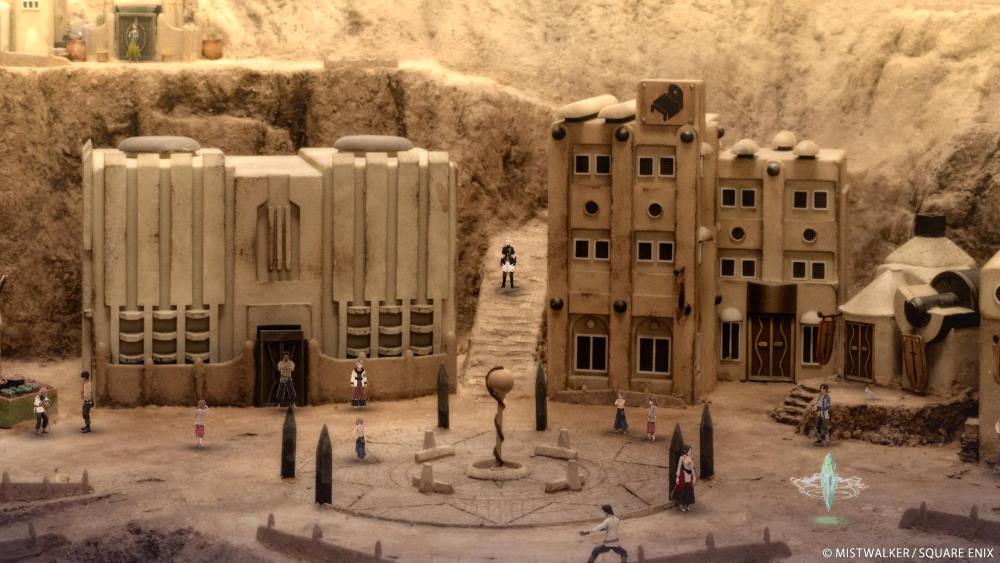
Media: Sakaguchi-san, you mentioned that working in Fantasian was a dream come through for you as you “walked through all of these dioramas.” In bringing Fantasian to much more capable hardware, did this help fulfill your vision even further? Did the PC and consoles afford the team more leeway to breathe more life into the game?
Sakaguchi: With Apple arcade, I think I was able to achieve quite a bit in terms of being able to walk through and experience these diorama worlds. But of course, apps come with their own limitations, namely, the app store, you are only allowed to create apps up to four gigabytes. So, bringing this to both console and PC, it really expanded what we were able to do in terms of the space, for example, we had actually photographed all the dioramas in 4K resolution, but we weren’t able to fully utilize all of that in the app version.
I think a lot of what makes diorama so charming is the details, and take any tree or branch in the world and you see it in 4K, see the imperfections of that hand-crafted diorama, something that if you were developing it using 3D CG techniques, you might say, well, why is this branch bent, you know, make this thing straight? But I think that those charm points that the diorama has are more fully expressed because of the 4K resolution that the console and PC versions allow. So I think I was able to extract more of the so called essence of the dioramas.
Early on in the games’ development, I had this diorama-like props in my office and I was looking at it saying to myself that it would be really fun if characters could explore and have these massive adventures through these handcrafted worlds. So, in terms of the dioramas, it wasn’t that I decided I’m going to make Fantasian and then the thought, well, I can use dioramas to create all the environments. The dioromas came first in terms of the order of the sort of creative process.
I’m a huge Gunpla fan as well. 30 years ago, I remember having an airbrush and I would spill a little paint on the carpet and my wife would get really mad at me when I’m trying to make these Gunplas. (laughs)
When we 3D scanned these dioromas, we actually couldn’t use a more traditional 3D scanning pipeline. We had to do a lot of trial and error and R&D and finally settled on this technique that a lot of cities used to create 3D models or meshes of their entire city, where they take a lot of different still photos and then stitch them all together and render a 3D model based off of hundreds and hundreds of photos.
And once we got this 3D model and all these high resolution photos, we actually kind of projection mapped the photos back onto the 3D mesh, and that’s how we create the look that Fantasian has. And through all of our R&D, that was the best way to express the charm of the dioromas themselves.
We originally took all these photographs in 4K and we actually had to compress all the textures down to 1080p, so we don’t get the full depth and resolution of 4K. But now with what the consoles allow us to do, we’re able to deliver that almost raw photos and bring you closer to what those dioromas felt and looked like and translate that into the in-game expression.
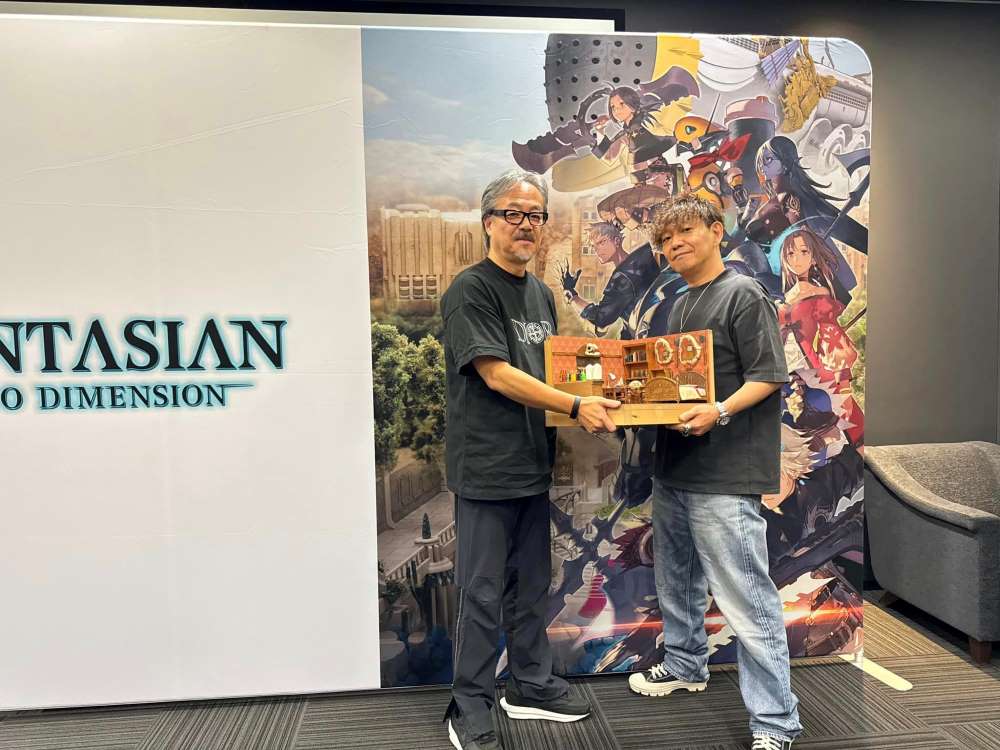
Media: Why did you decide to add a new Normal mode of difficulty on Fantasian: Neo Dimension?
Sakaguchi: I don’t know if Matsuda-san in the room with us right now, but she and Yoshida-san share the same opinion. So when we were in a conference together, she said, “I can’t solve these encounters.” And I think it was apparent that the difficulty perhaps was a bit too high on the original version of Fantasian. And this is something that we felt since the Apple arcade release, but the part of we thought, well, since this may be my last project that I ever do, I can make it any way I want. So I thought, oh, well, it’s a little difficult, but not a big deal.
I wasn’t as focused on making something that was more palatable for a wider audience, and I think the second half of Fantasian has a very sharp difficulty curve, but one of the big goals for Neo Dimension was making it more accessible to a wider audience who has PCs and a consoles. So it almost gave us a second chance to address some of those difficulty curve issues.
And we called it normal mode because I think this is perhaps, I guess you could say, the proper difficulty curve that Fantasian should be experienced in, and it feels really good for players to go through. So, thank you, Matsuda-san for raising your hand and saying, hey, I can’t solve these these encounters because now we have normal mode.
Yoshida: And to help provide more context on Matsuda-san… We worked together on Final Fantasy XIV and Final Fantasy XVI, she fulfilled the role of kind of an assistant producer. We’ve worked together for 15 years. So, whether it’s Final Fantasy XIV or XVI, I know oftentimes people like to think, I’m the big boss, but she’s actually the secret boss when it comes to making decisions on XIV and XVI.
Because of Matsuda-san’s comment, we now have normal mode, but if you play Fantasian, you’ll notice there’s also a hard mode, which in a way, preserved Sakaguchi-san’s original game balance, and for those who are looking for a bigger challenge or want to play Fantasian as Sakaguchi-san originally envisioned, I encourage you that after you beat normal mode to take on hard mode.
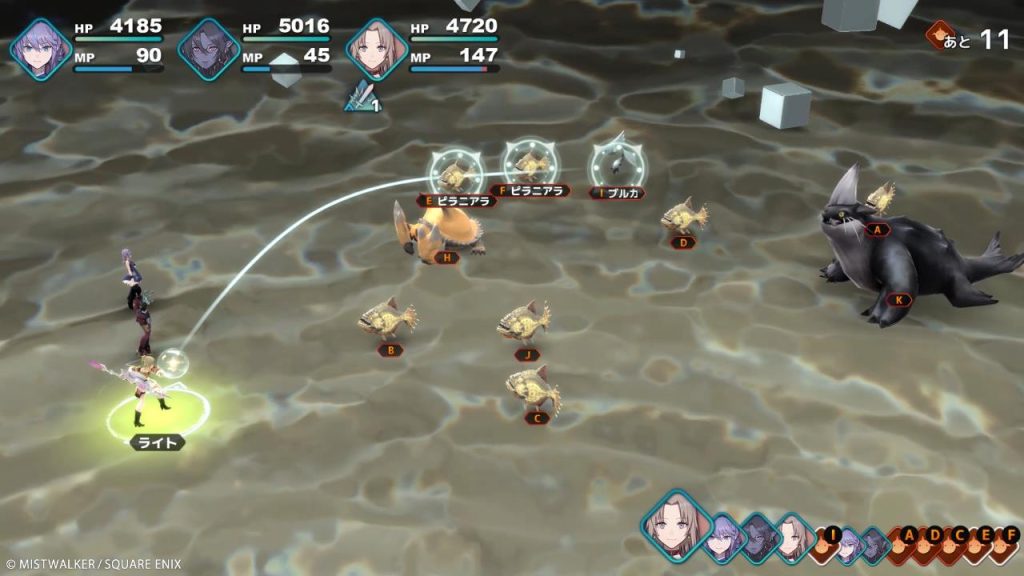
Media: What improvements were made when porting Fantasian from Apple Arcade to PC and current-gen consoles?
Sakaguchi: We touched on the voiceover as well as the 4K resolution for a lot of the assets and resources. But having said that, the Apple arcade version, we had to assume a majority of the players are going to play at using a tactile touch type of user interface. Of course, you can’t play it with a controller, but Fantasian wasn’t really optimized for controller inputs, so it was more focused on being a fun experience for touchscreens.
Now that Fantasian is coming to PCs and consoles, however, we know the controller is probably going to be the primary user interface that players are going to use. So we paid a lot of attention to optimizing the game for controller inputs as opposed to simply the touchscreen inputs. And there are also a lot of smaller quality of life improvements, for example, the characters move a little bit faster. So overall, I think it’s become a much more satisfying experience.
And because we originally developed the game with a touch type of interface in mind, for those people who are able to attach a mouse to whatever game device they have or PC specifically, it’s actually quite a fun experience because you can click around on the screen and it’s almost it’s the closest experience to playing it with the touchscreen. So, I personally quite enjoy clicking around at a mouse.
Yoshida: And from the Square Enix site as well, we knew that the game was coming to PC, so we actually made a lot of requests to Mistwalker in terms of different types of input methods for the PC and MistWalker has been very generous in accommodating our requests. So highly encourage anyone as a PC that the experience is going to be quite good.
A Huge Final Fantasy High School Reunion
Media: How was the experience when developing from mobile into consoles?
Sakaguchi: Our main programmer who also served as the director of the project. His name is Nakamura. He’s a very talented engineer, so he solved a lot of these different type of interface issues with ease. There are a lot of areas where I don’t necessarily have a very high resolution view of, but hearing in the meetings, Nakamura-san was fighting everyday in terms of trying to make sure the experience was the best it possibly could be.
Yoshida: When we first started engaging with Mistwalker and we said, these are going to be all the target platforms for Fantasian. Now we thought it was gonna take a little while to start getting first builds for each platform. But they all came very fast, so I was surprised at the speed with which Nakumura-san was porting it to every different platform. You could really feel his talent as both an engineer and a director in terms of how effectively and efficiently he can translate what’s happening in an app to different types of consoles. So as soon as I saw that first build and how fast it came out, I had to tell Sakaguchi-san he had a really talented person on his team.
In addition, from the Square Enix side, we had our own producers and project managers on the Fantasian project, but I would see both our team and the Mistwalker team work together quite seamelessly. For example, the QA process was something where Square Enix took the lead, but we would make these bug reports and a database and then the fixes would go in and then we would get responses to our bug reports, take that or even implementing a lot of the voiceover and the casting. I would see a lot of the interactions between the Square Enix team and the Mistwalker team and the communication was very smooth, so I think it was a very positive relationship in terms of building something together.

Sakaguchi: And this isn’t necessarily development related, but I look back at my career and I really got a huge part of my start from the NES and Nintendo. So, without the NES, I would say none of any of this would have been possible, but then, you know, I cheated on Nintendo and went to PlayStation, but whether it was Nintendo or Sony, I think both of those companies in addition to Final Fantasy VI kind of represent a lot of my origin story in terms of my career development.
So, initially approaching Fantasian, I was thinking that this could be the last game that I create as a game creator. Not only being on Apple arcade, thanks to Square Enix, making it possible here we are coming back to both Nintendo and Sony platforms. It really feels like this huge high school reunion. It’s a very touching moment that’s very thought-provoking as well, and at the same time, I just recently became a grandfather for the first time, so I think there’s a lot of different emotions and a lot of nostalgia that’s happening.
Media: What do you think the future holds for JRPG trend?
Sakaguchi: I get asked this question often, what I think the future of JPRGs might be, but to be perfectly honest with you, I never really think about that too much, and even Fantasian, for example, I didn’t consciously try to say, hey, I’m going to take the JRPG genre and bring it into present day necessarily.
In fact, a lot of it was influenced by my experience playing Final Fantasy VI and return to my origins of game development and RPGs. So, in a weird way, I think Fantasian is almost this classic JRPG that was put into a time capsule, and we opened it up in present day. So, it was perhaps the exception to the rule and not the modernization or future trend of where JRPGs are headed.
That being said, I do think the JRPG genre is going to continue to evolve and change over time, but where it’s headed and how it’s going to change is something I really don’t have any opinion on, because I just make the games that I want to, and Fantasian is I think it’s kind of a separate from that sort of larger wave or meta trend, if you will.
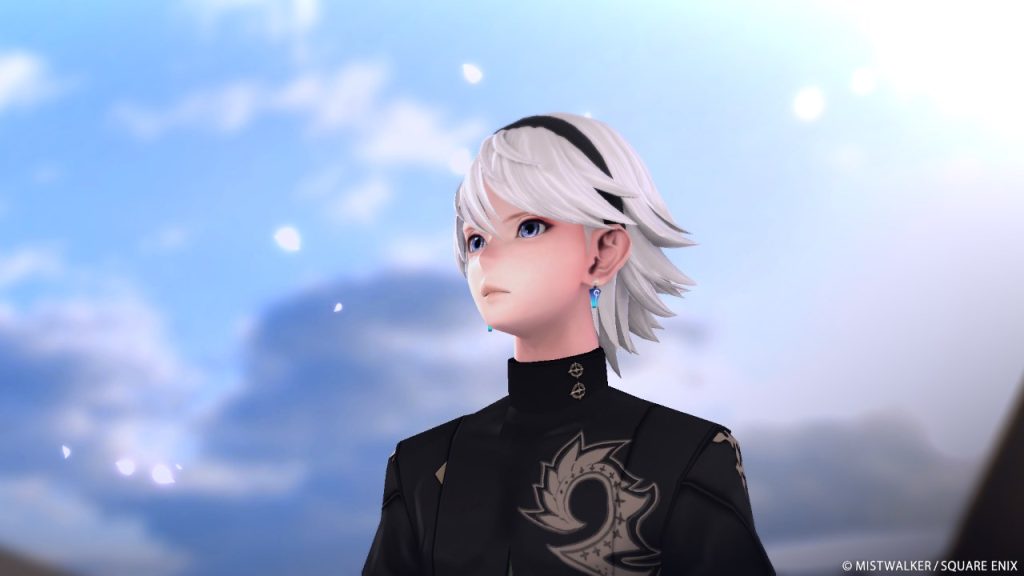
Yoshida: I think this is a very difficult question for a lot of the Japanese game developers, because when we go out to make a game, it’s not like “yes I’m gonna go make the best JPRG ever.” In fact, we’re just making our RPGs. So, I know that it often kind of funnels into the subcategory of a JRPG, but again, thinking about what the future holds, it’s not the JPRG genre per se, but we just want to make a good experience, a good RPG, for players to experience.
So, it’s sometimes a very difficult question to think about and address because what does that subcategory actually represent? Perhaps you guys have a better idea of it than we do, because we don’t set out to say, you know what? I’m going straight for that JPRG genre. I’m gonna change the future of it.
Emotions and Feelings
Media: The original soundtrack of Fantasian was composed by the renowned composer, Nobuo Uematsu, and an in-game music player was added in the update. We’re curious to know if these audio features have been fully incorporated in the new version. Could you also talk about how the soundtrack elevates the player experience?
Yoshida: The music player, in addition to all the other features that were added to the original Fantasian, are going to be included in Neo Dimension. You can consider this to be the fully loaded director’s cut edition of the game. The conditions to unlock the music player are also the same as the original Fantasian. And not just that, there are additional secrets that I implore all of your readers to try and discover them in Neo Dimension.
Sakaguchi: Oh, I didn’t know we were talking about that. (laughs) The PR department is going to get in trouble later on for revealing too many secrets.
Yoshida: The final encounter, the last boss Matsuda-san is going to have a chat with you later. (laughs)
Sakaguchi: I think music is extremely important in the world building and sort of emotional journey that players and audiences experience when playing video games. And while developing the game when we’re playing alphas or any type of build that’s in progress, we don’t necessarily put music on it, and I actually actively say, I don’t even want to hear a temporary music while I’m testing and playing through some of the early stages of the builds.
And I try to create the maximum type of emotional movement or journey for the audience without any music whatsoever. But then when I get the actual final Uematsu melody, I say, oh my gosh, it enhances it many fold, it’s incredible how much depth gets added just simply by adding music there. Even knowing what’s going to happen next in my own game, and I have some scenes where I think to myself, it would be great if I can make the player get a little emotional and maybe cry a little bit on this scene and without any music, perhaps I can’t really achieve that level.
But as soon as I hear the music, even I get a little watery eyed sometimes playing certain scenes and seeing the characters interactions play out. And as someone who initially said that I don’t think we need voiceover in this game, I think the voice and the music and basically anything audio-related in this context has a lot of power in terms of affecting people and moving people’s emotion.

Media: What kind of experience do you hope to deliver to the fans who have been following Fantasian: Neo Dimension? How do you make sure that gamers can achieve this experience in their game design?
Sakaguchi: A lot of my games, throughout the years, share a common denominator, which is that once the player has experienced the story to the very end, I want to leave them with this kind of almost warm and uplifting feeling and emotion. I think a lot of that can only come after you overcome a lot of challenges throughout the game. There is a sense of accomplishment and achievement and that warm feeling you get only after you were gone through those types of challenges.
So this is true of video games and other mediums as well, I think people have lasting memories that they kind of attach and associate with certain experiences and certain forms of media. At the very least, for my games, I want to impart this very positive influence or positive feeling, and I hope that Fantasian is able to achieve that. I’m curious to hear player feedback and if they were able to experience that type of emotion.
Media: Can you speak about the meaning behind the subtitle, “Neo Dimension”?
Yoshida: When we first took on this project, we knew the Apple arcade version already existed, but when we did a little bit of focus group testing on our own end, it turned out a lot of people actually weren’t aware of the existence of Fantasian and didn’t know about the game. So we wanted to make sure all of what makes Fantasian unique and what makes it such a great game is communicated and delivered to audiences.
And in addition to that, when our own team members to play the game, when we got the first build, we kind of start to think about how do we communicate and how do we convey what makes Fantasian attractive to the players. We felt it had that essence of that classic Final Fantasy type of feel, it really encompassed what I think makes that genre itself fun and had elements that brought it into the present day.
It felt next-gen and we thought, well, if we wanted to feel next gen kind of knew what does that mean? “Neo” encompasses that and “Dimension”, I think, it kind of brings the game into what the next dimension would allow. There are many candidates, and we went back and forth with the Mistwalker team but finally settled on “Neo Dimension.”
Sakaguchi: There is also a unique mechanic in Fantasian called the “Dimengeon”. Dimension and dungeon combined, where you’re able to stash enemies away from random encounters and fight them all at once. So there’s these unique mechanics as well as in game, the players they’re jumping between different timelines and dimensions. So I think there’s a lot of different relation to that particular word. I think Yoshida-san did a great job of picking that up and then putting it into the subtitle. There’s a lot of in-game terminology that also relates to the subtitle as well.
Yoshida: And I think if you play the game to the very end, a lot of what that subtitle means will kind of all come together.
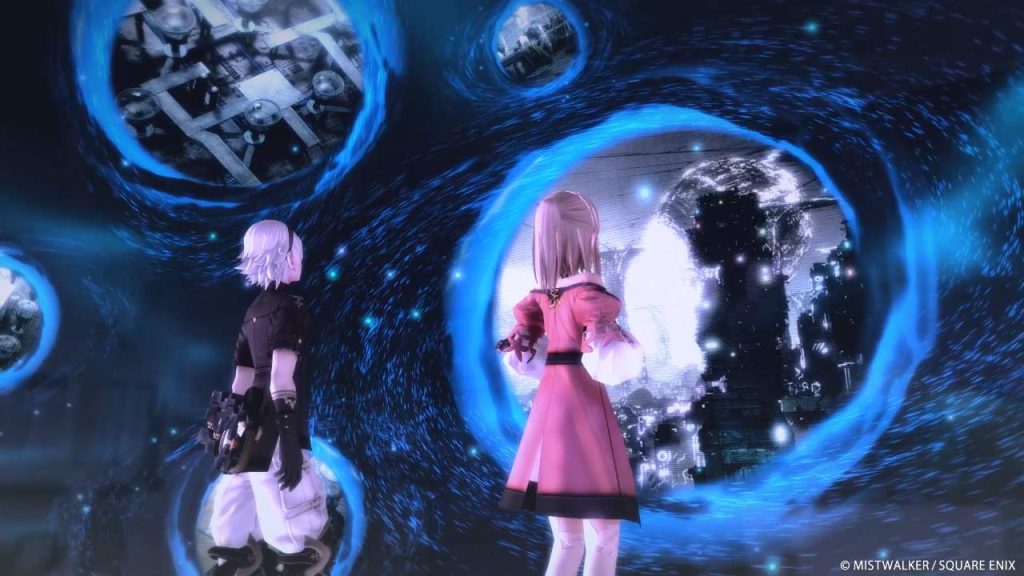
Final (Fantasy) Words
As our media interview ended, Sakaguchi-san and Yoshida-san had a final message to impart.
Yoshida: It’s been a huge honor to be able to work with Sakaguchi-san in this fashion, and I know Fantasian, even in its original form on Apple Arcade, was highly rated very critically acclaimed as an RPG, and we ourselves got to play it before we took on the project. So we would love that more people are able to experience that same journey and same emotion that we did, and in Neo Dimension, we have both English and Japanese voices, which should enhance the experience and accessibility.
So we’d love to hear everyone’s feedback and comments, and I know that all of that comment and feedback is going translate to Sakaguchi-san’s motivation, so we can continue to see what kind of creative endeavors he has in the future.
Sakaguchi: I think Yoshida-san this on really said everything that could be said, but if I can add on anything to that, it is that I love to travel and here we are, I’m sure it’s no coincidence that we got to share this experience at this moment together with all of these different media outlets from Asian countries. So if you guys have any gaming events, you know, however big or small, please give me a call and give me an excuse to travel so I can enjoy my time. Please call me.
Yoshida: You may think that Sakaguchi-san is joking, but I assure you he’s not. And I myself, I had the pleasure of traveling to a lot of different countries in Southeast Asian, and I know the passion fans have for the Final Fantasy franchise. So, if you give Sakaguchi-san on a call, he will go to your game show with his PC that has Final Fantasy XIV on with the ultrawide monitor.
Sakaguchi: But make sure whatever hotel you guys put me up in at these game shows has a really good Wi-Fi connection.
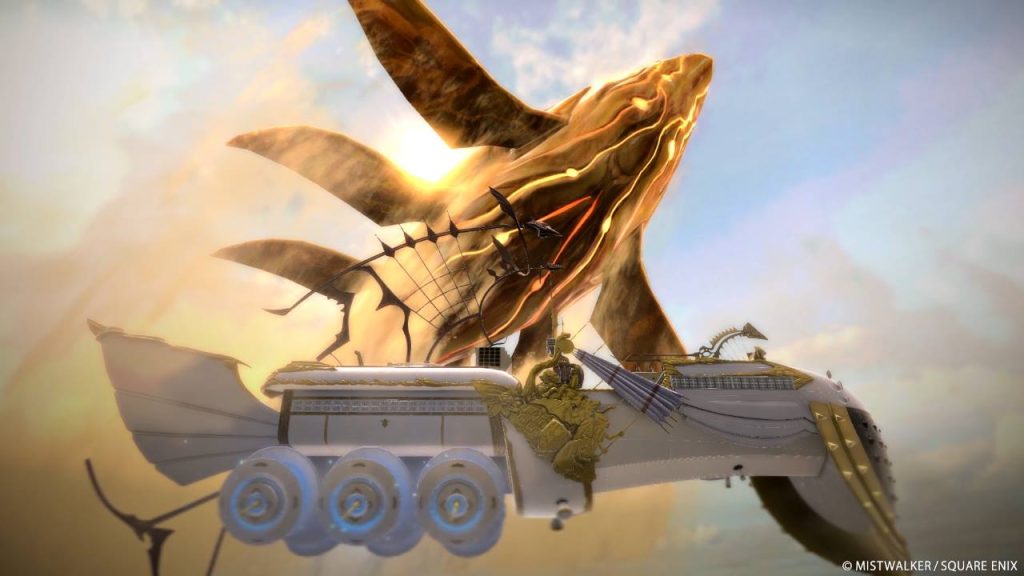
Special thanks to Bandai Namco Entertainment Asia, Square Enix, and to Yoshida-san and Sakaguchi-san for this opportunity.
Fantasian: Neo Dimension launches on December 5, 2024 on PS5, PS4, Nintendo Switch, PC, and Xbox Series X|S.

